It's been absolutely ages since I've shown you all what I've been up to at GMRC, and given that my last post was all about the museum, I thought I might as well make this one similar.
Before our attention turned to getting specimens ready for the redisplay, I made quite a few bases.
Here's one for a Harris Hawk.
One for a gull, finally making use of one of the plaster rocks I made several years ago!
This one was great fun to decorate as I went wild with the sand and shells, making lots of layers and finishing off with a nice coat of varnish to give everything that 'recently submerged' look.
Another one of my rocks was used for this Song Thrush base - I felt rather sad about covering it up actually, though I was pleased with the final result!
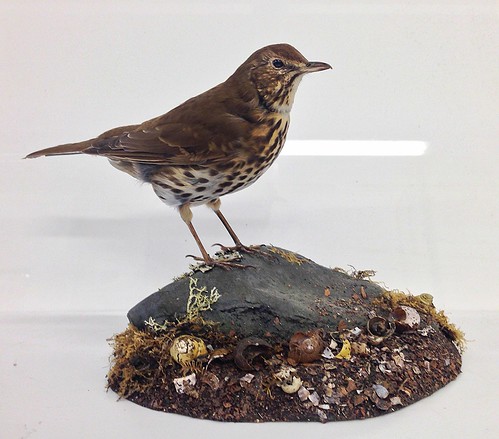 |
| Thrushes are known for using rocks as 'anvils' to smash snails on, hence all the shells. |
This little Willow Warbler had incredibly tiny and delicate feet, so I had to drill probably the smallest hole possible into the twig to host the leg wires, then gently carve out the underside so I could hide the leftover wire.
These two - a Dunlin and a Greenfinch - both had pretty boring stands before I got hold of them!
I think the Greenfinch is one of my favourites - I love the base but the expression on the bird makes it even better - he looks like such a snob!
Just look at him, lording it over everyone else on the shelf because he's got a much better throne.
Sometimes the specimens aren't on any base at all, or just temporary MDF ones, but other times they're on old ones which have seen better days. That was the case with this Black-necked Grebe - she was sitting on just a chunk of roughly painted peat!
I made her a nice clump of reeds to sit on instead, and while the colour isn't really what I wanted (we ran out of the good green paint and I had to improvise) she looks rather good in it.
All her pals are dead jealous now.
For the last few months I'd had to put base-making on hold and help get some specimens ready for the redisplay. This meant a combination of cleaning, repair work and actually packing them up.
Some cleaned up really easily and didn't need much work at all, like this lovely Wombat here...
 |
| I think the nostrils and teeth make a spooky sea otter! |
...while others, like the now infamous Mongoose Lemur, were more difficult.
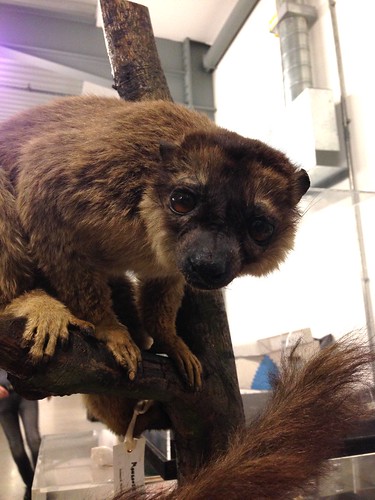 |
| Stop looking so cute, you terror. You know what you did. |
A few specimens needed some paint touch-ups and small repairs.
This poor Chinstrap Penguin had a pretty nasty seam split along his neck which needed filled, but in order for the glue and filler to set properly with the edges aligned, we had to find some way to pull his neck taut over the weekend. Between the three of us we came up with this. XD
Yes, a can of paint, random bits of wood, a massive lead weight and cotton tape - all totally normal equipment for penguin-bracing. It did the job though, and the repair is completely unnoticeable now. All that was left was for me to repaint his feet, as Chinstraps have pink feet, not yellow.
Fun fact! If you run your finger over the edge of a penguin's wing, it feels like one of those chunky paintbrushes with stubby synthetic bristles.
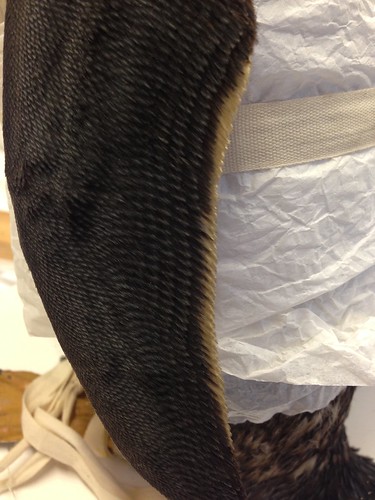 |
| Answering all your 'what does x animal feel like?' questions since 2012 |
The Secretary Bird also had wrongly coloured legs, though they took longer to repaint as they're absolutely massive birds!
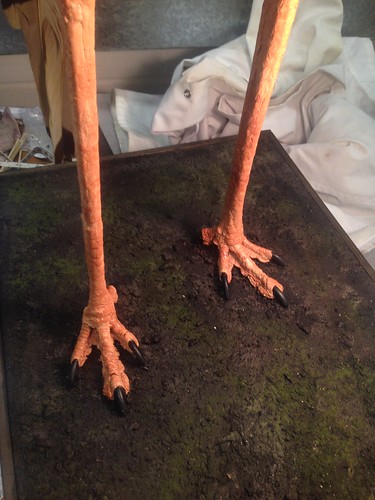 |
| They're like comedy legs, you can't quite believe they're real even when they're right in front of you |
They've also got the most epic eyelashes.
Whoever mounted this Binturong had been a little overzealous with the gloss varnish, and he had the shiniest nose and mouth imaginable.
After I'd spent several weeks cleaning him (he wasn't quite lemur level, but not far off!) I went over his nose with some matte varnish which made a big difference.
I cleaned the tortoise and the cobra here - the tortoise came out particularly well I think, he's very shiny now! There was an absolutely beautiful Pangolin I cleaned too which is also on display now. (you can just see him the background there, behind the Sloth Bear) I adore Pangolins, so I was really pleased to get the chance to work on him.
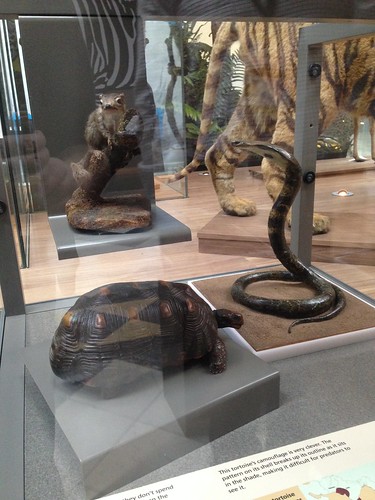 |
We spent several weeks just boxing things up as soon as they were clean and it felt like we went through every cardboard box in the place!
The Albatross was mounted specially, and we had the job of taking it out of the freezer and sending it off to the taxidermist and my god, they're heavy. Like, really, really heavy.
It is the focal point of the case my model's in, though annoyingly I haven't actually got a photo of it yet, haha.
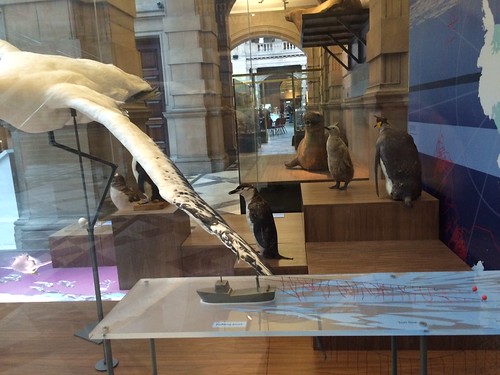 |
| You can see our old friend the Chinstrap in the middle too. |
I couldn't help thinking that it looked like this guy was steering a gondola...
Here he is in his new home, along with a snake I cleaned as well.
That big Water Buffalo in the background took ages to clean as well, but he's one of my favourites and is now a feature specimen in the gallery.
We weren't doing anything with her, but just in case you've ever wondered just how big Walruses are...
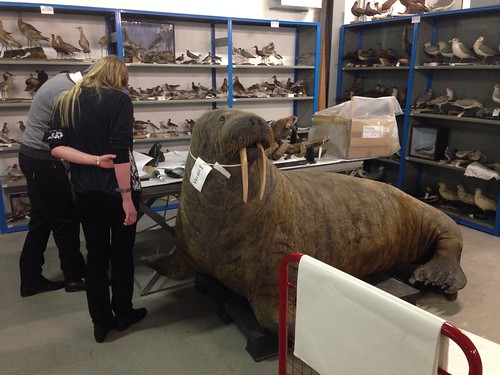 |
| She's not even the biggest one in the pod either - the male is huuuuuge |
When we're not cleaning specimens, we sometimes end up at Kelvingrove itself, where we usually find ourselves underneath the displays themselves, armed only with long sticks and a solitary Henry Hoover, to get rid of the built up dust and foost which proves irresistible to the moths which can then go on to prey on the taxidermy. You'd be amazed at what else we find under there - a million and one pencils, pens, half eaten sweets (eurgh) and usually half a ton of leaflets and kid's toys! I found a magnifying glass and one of those big graphite sticks once - obviously the art students had been in.
Before the Life Gallery reopened we were there to do some specimen cleaning, and that included some of the larger animals like the giraffe.
How does one clean a giraffe, you might wonder?
Well, like this apparently.
We had a stepladder to get up higher but it was still a hell of a job!
The crocodile was significantly easier to reach...
...but those teeth really were sharp!
A few months back, we rummaged around in the freezer for a leopard (as you do) who'd been in there for the last twenty years as the museum was going to have her mounted for the redisplay. She was a zoo animal, I think from the now defunct Glasgow Zoo, and had been lying frozen in a big black bag since she died. It was the first time I'd ever got to see a body before it was sent to the taxidermist and even in death she was really beautiful. Her ears had been squished a bit and she was frozen absolutely solid but somehow she still looked like she was just asleep. We packed her up and she was sent down south to the taxidermist a few days later.
I only got to see her finished when we went to KG to do some cleaning and wow.
Isn't she beautiful? The taxidermist did an absolutely fantastic job, she looks so alive.
Anyway, that's your lot for this post - I'm working on a base for an absolutely adorable grey squirrel next so I'll need to do something about that in the future.
I'd like to leave you with this Ancient Greek pot I saw in one of the galleries the other day, which shows the finest set of eyebrows in antiquity.
Eyebrows, as they say, on fleek.

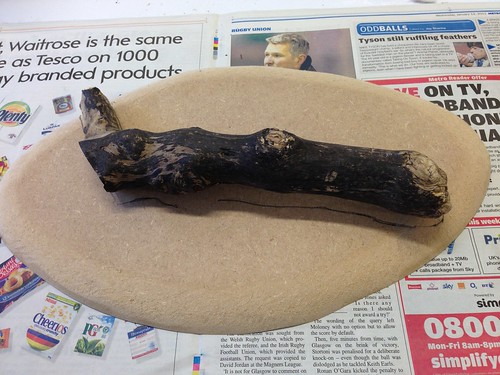
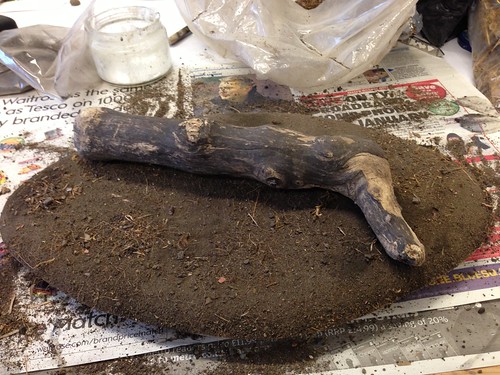
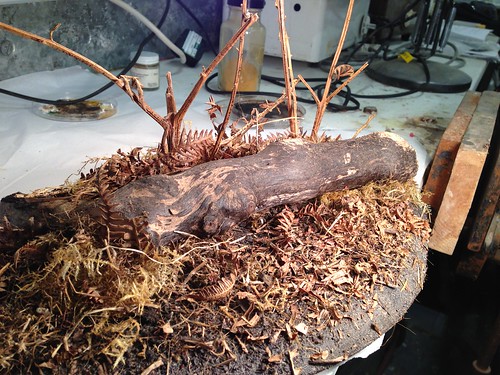
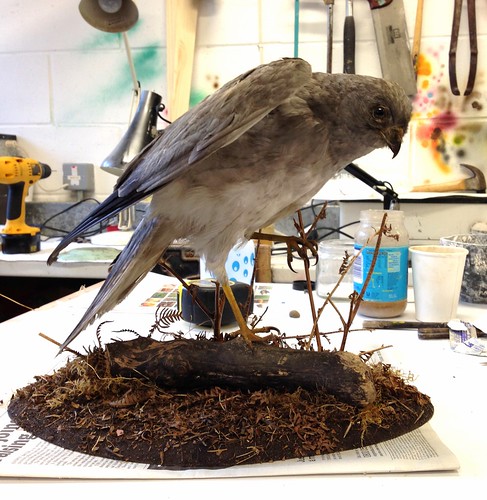
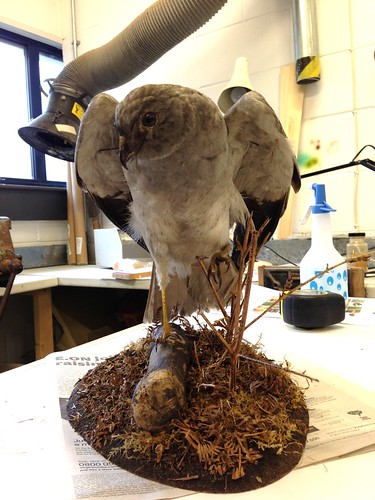
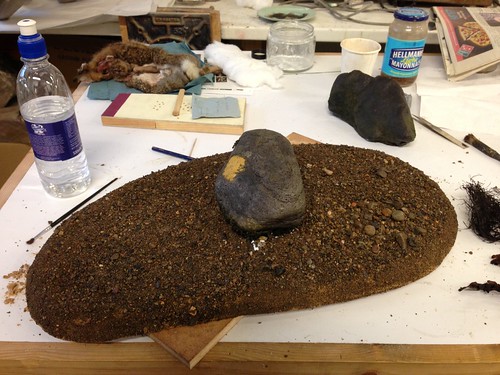
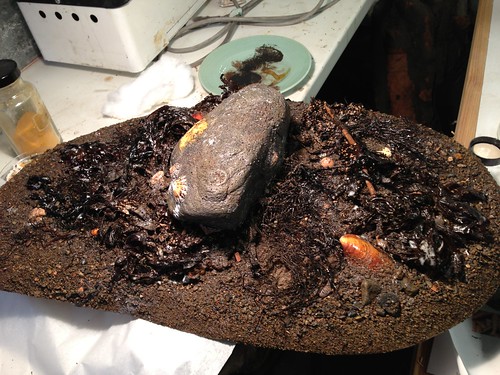
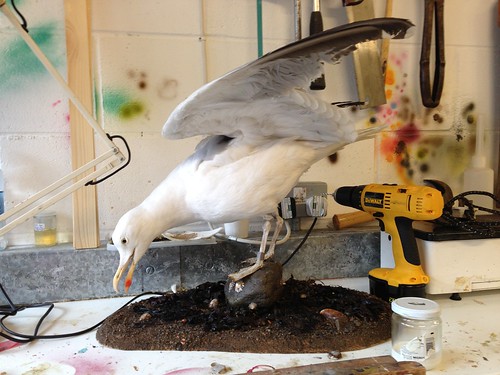
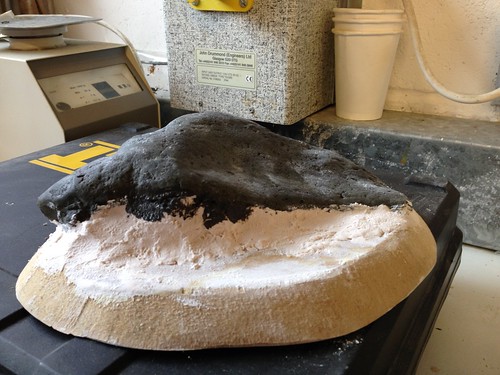
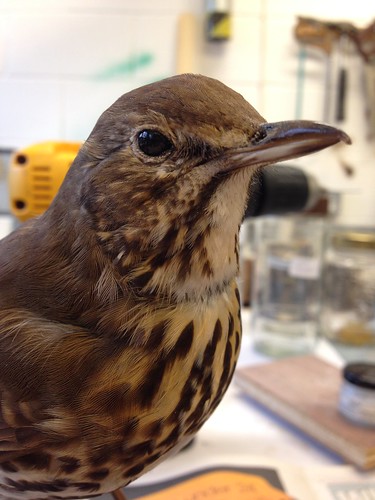

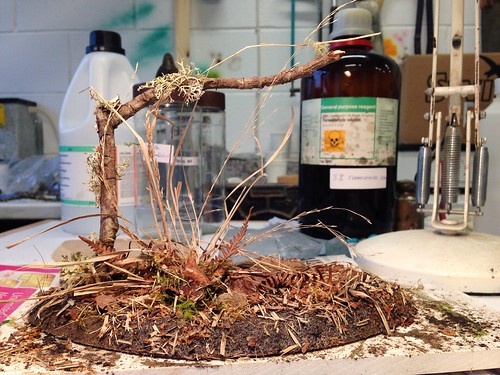
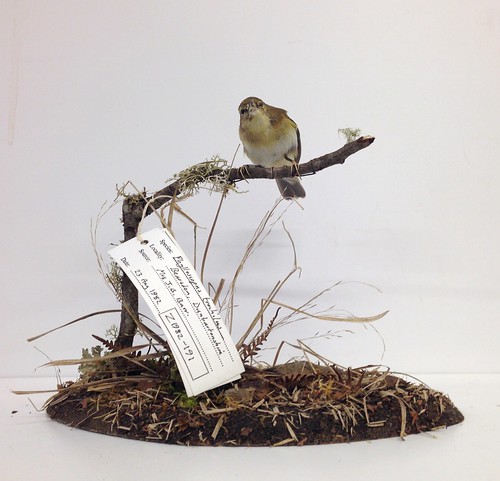
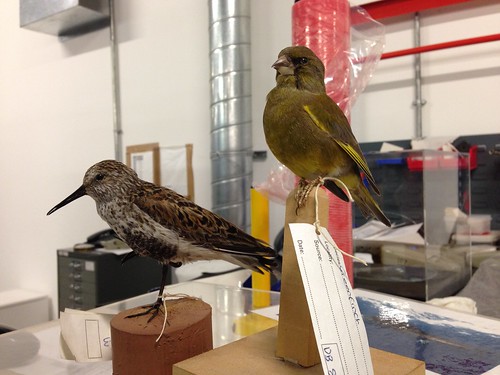
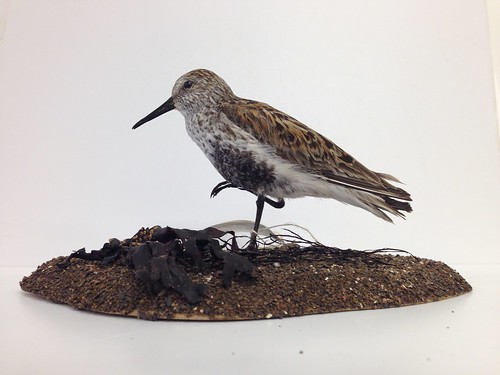
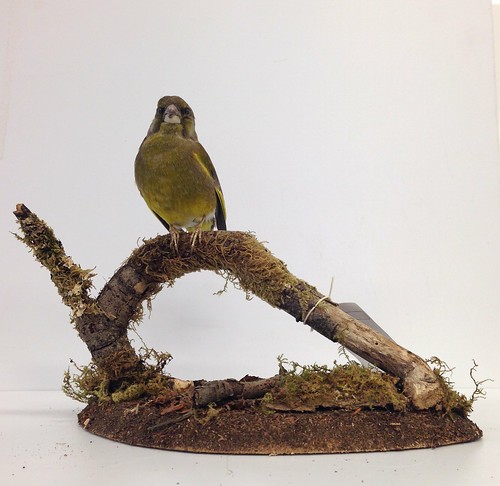
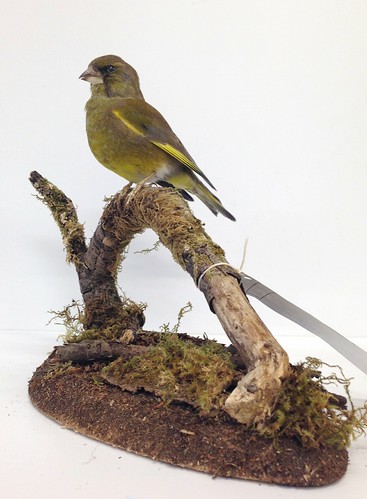

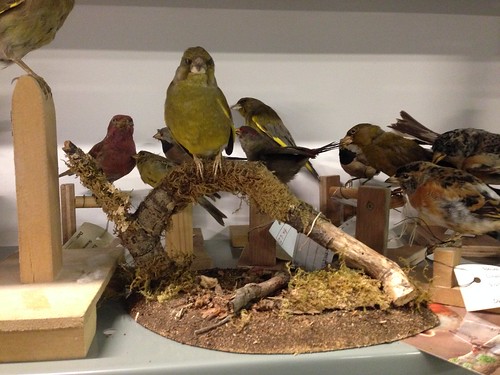
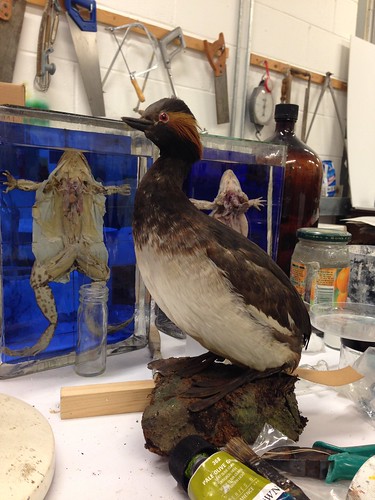
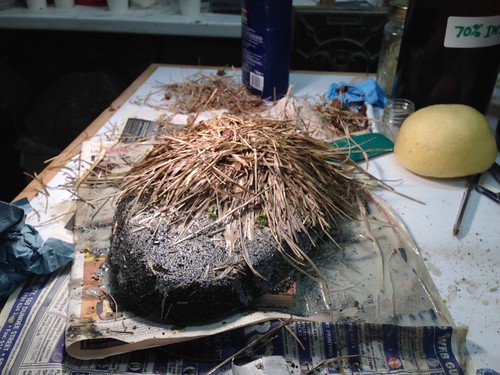
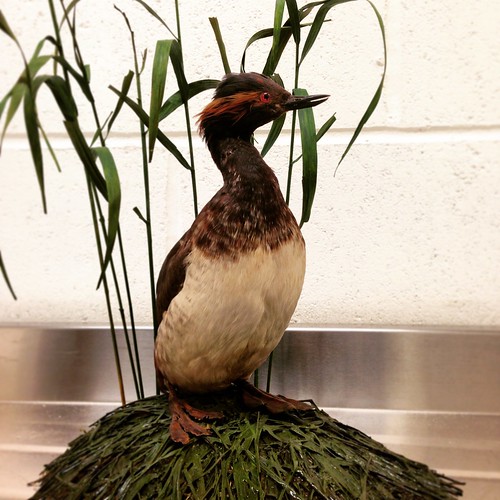


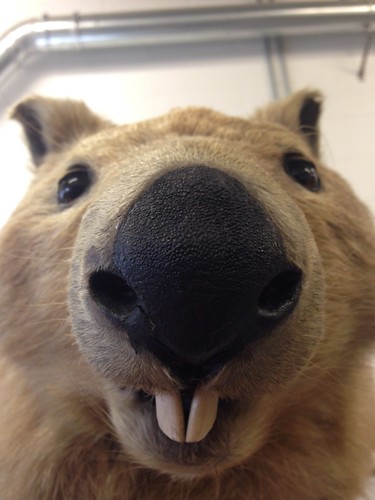
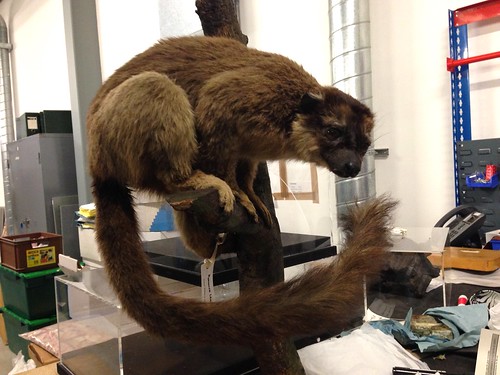
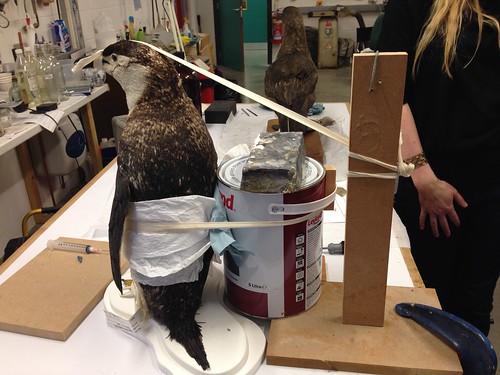
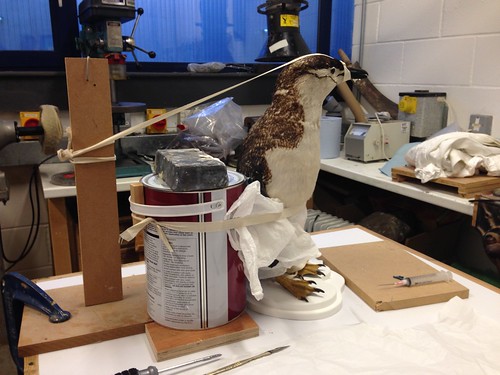

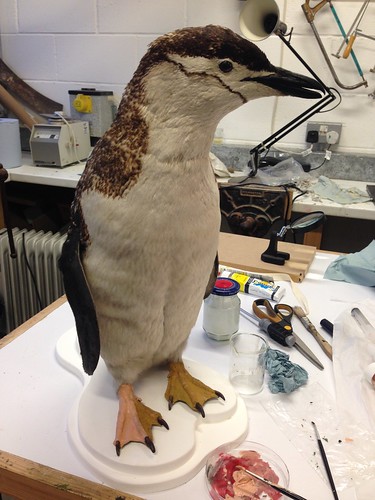
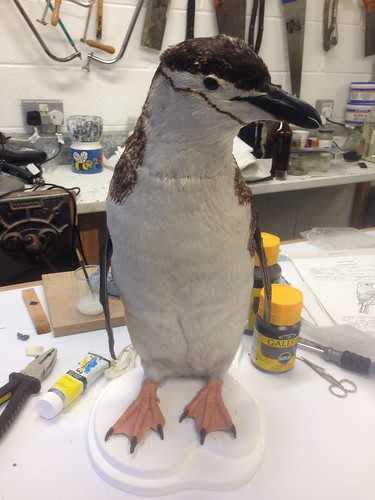

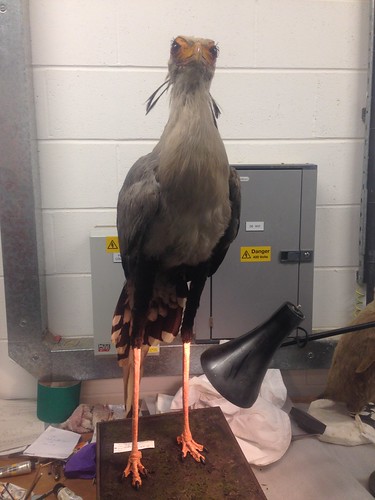
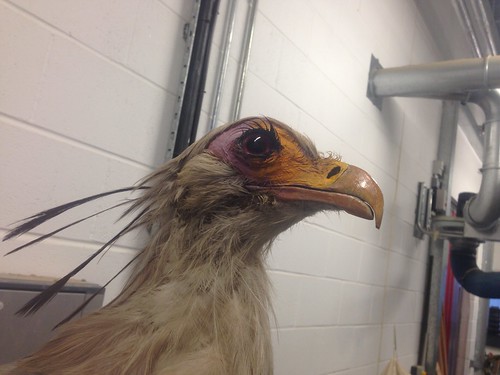
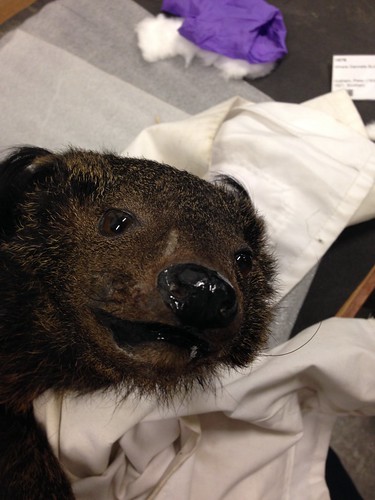
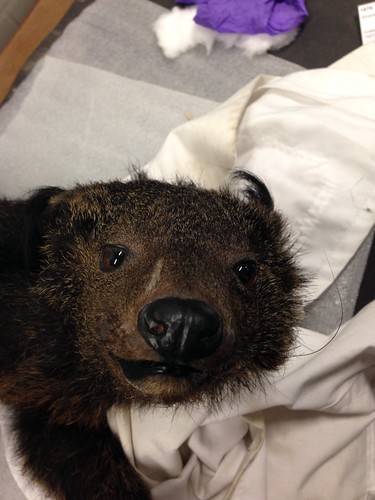
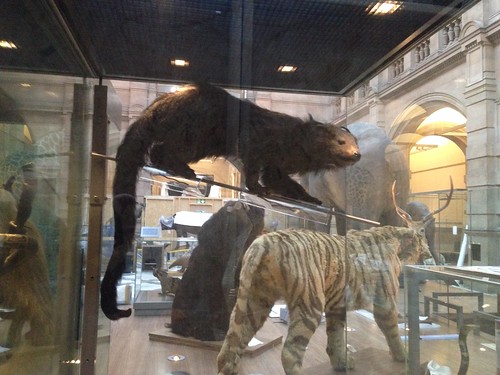
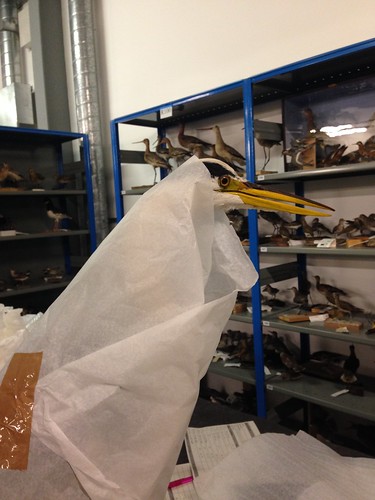
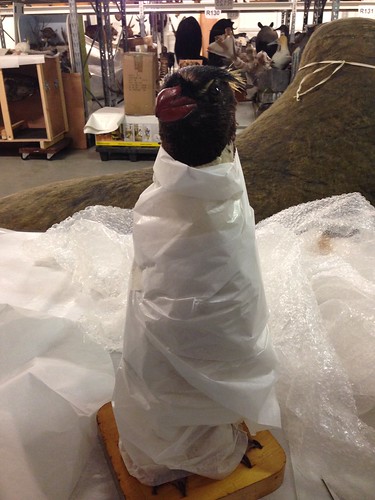
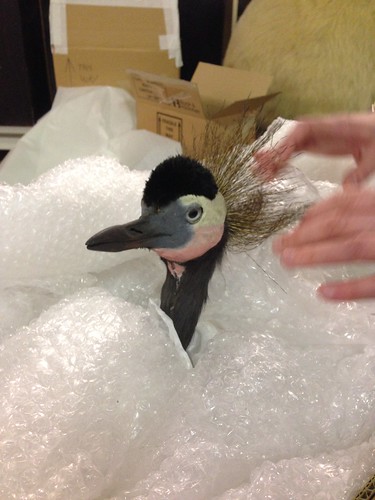
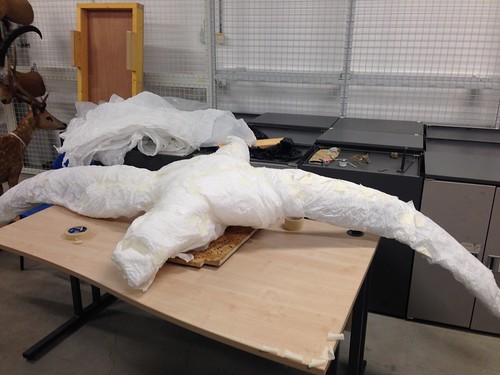

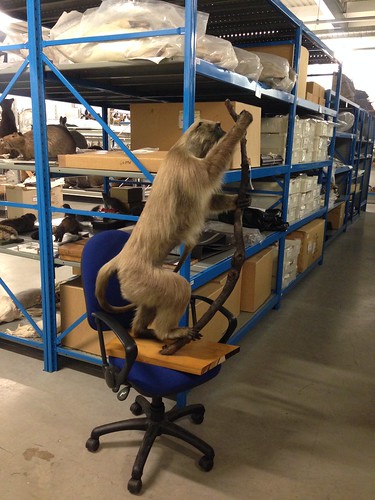
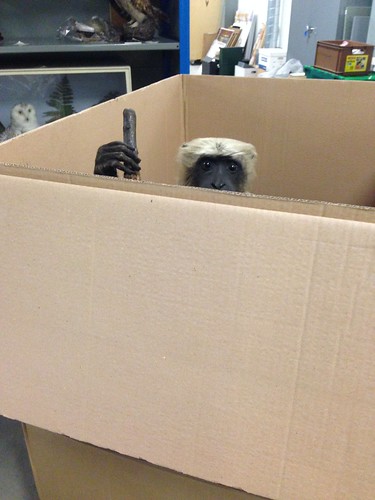
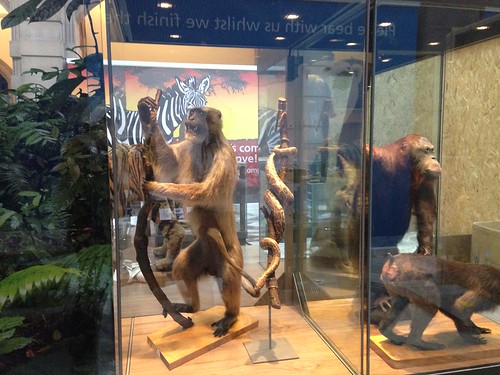
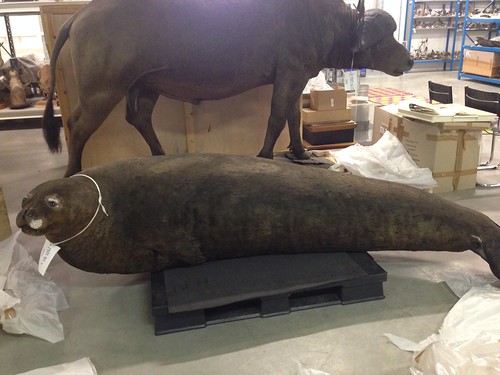

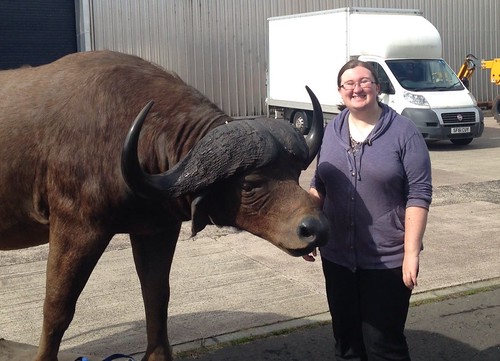
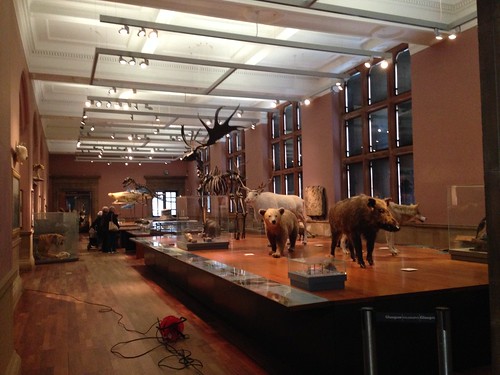
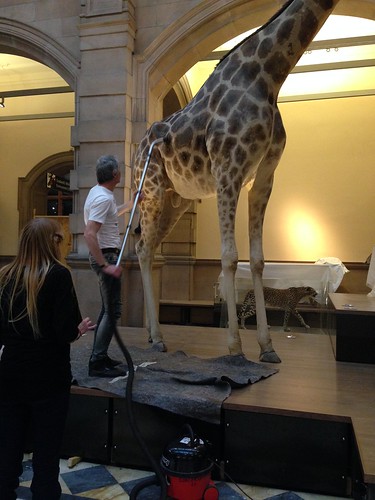
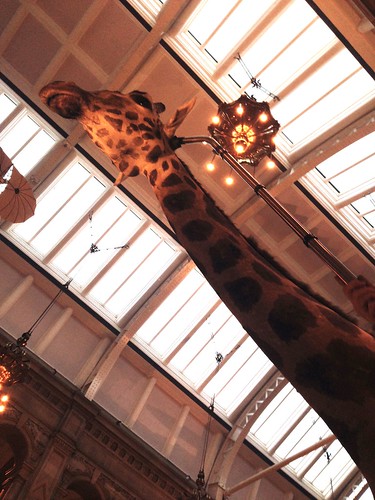
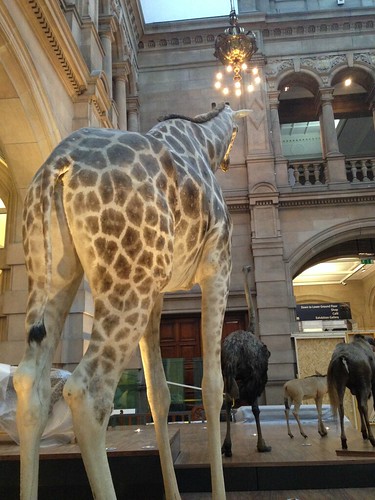

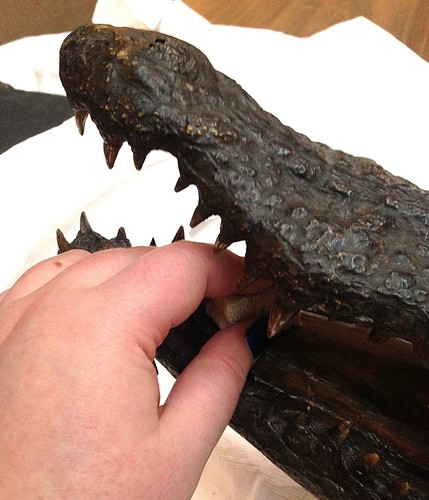
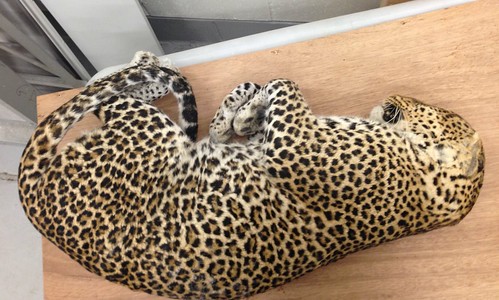
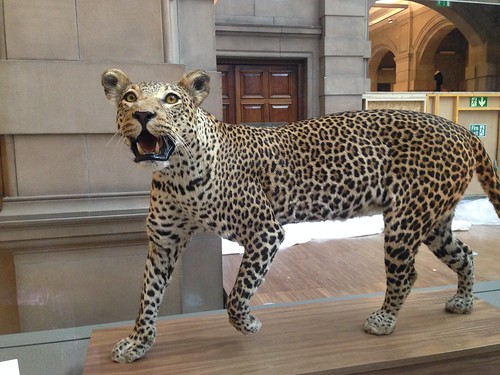
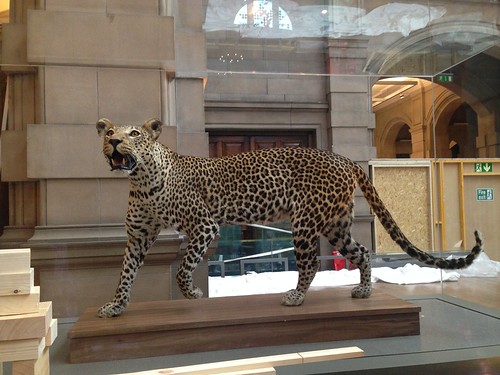
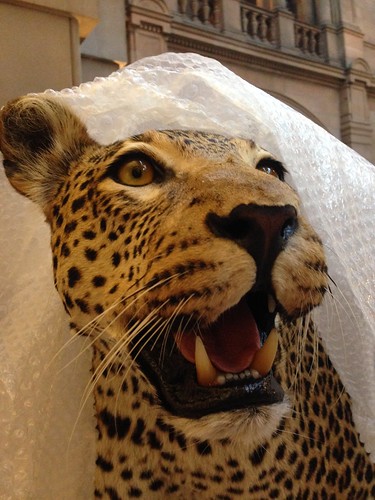
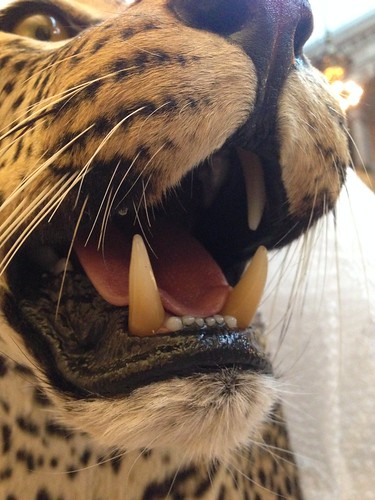
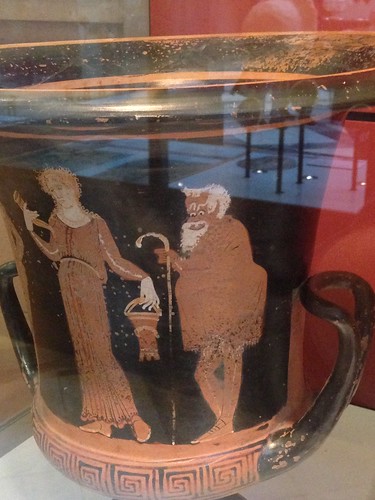
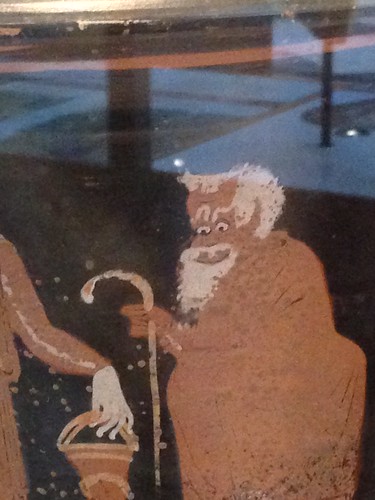
Oh my but you certainly have been a busy girl Christine! Taxidermy seems to be making a comeback and your work for making displays for the various birds was fascinating- WOW, YOUR Really GOOD! :D
ReplyDeleteelizabeth